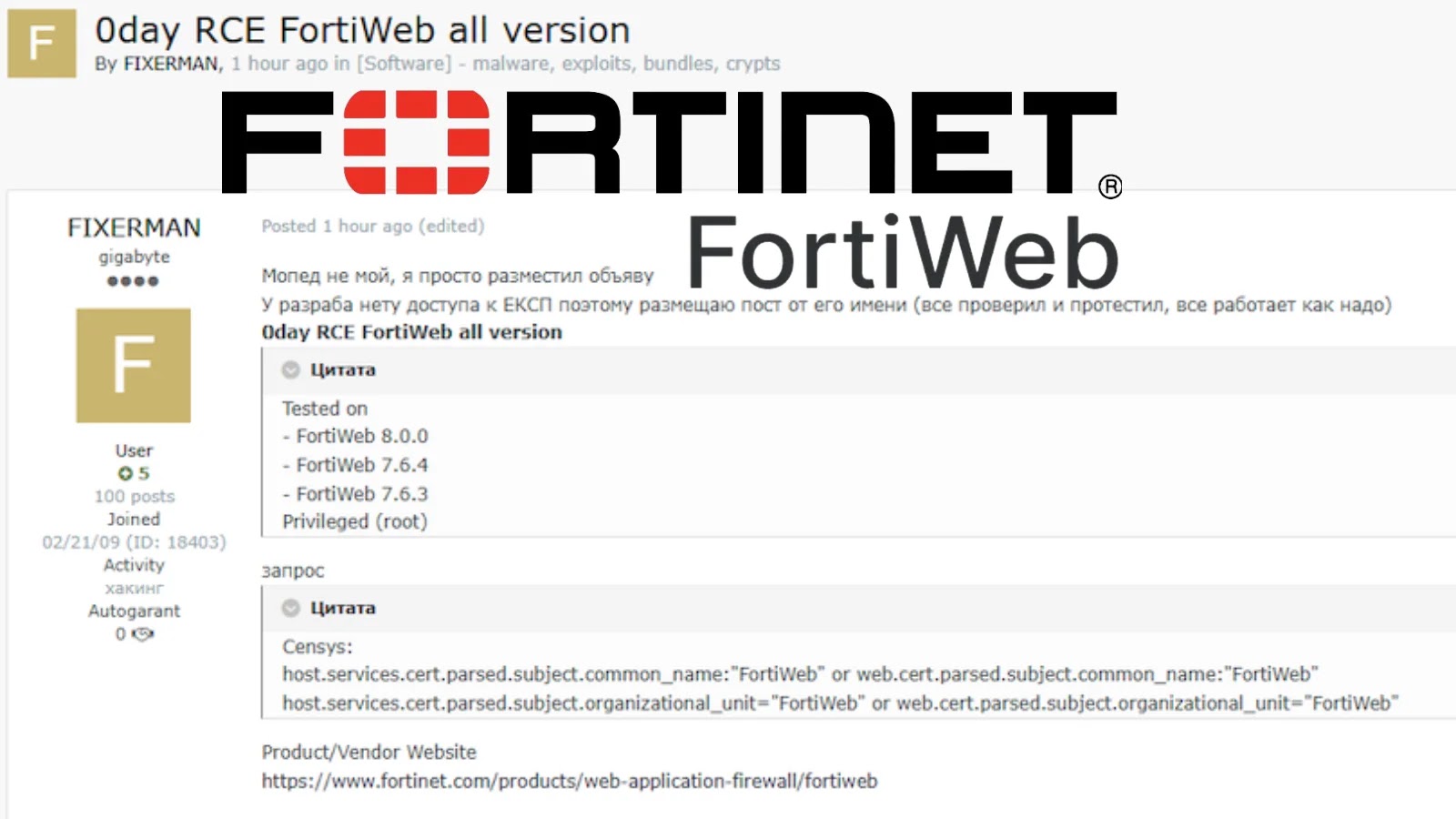
Critical Fortinet FortiWeb Vulnerability Exploited in the Wild to Admin Accounts
Fortinet FortiWeb Under Siege: Critical Vulnerability Exploited for Admin Access
In a pressing development for cybersecurity, a severe vulnerability within Fortinet’s FortiWeb Web Application Firewall (WAF) is actively being exploited in the wild. This critical flaw allows unauthenticated attackers to gain administrator-level access to the FortiWeb Manager panel and the WebSocket command-line interface. For organizations relying on FortiWeb for their WAF protection, this represents an immediate and significant security risk, demanding urgent attention and remediation.
Understanding the FortiWeb Vulnerability: CVE-2023-xxxx (Placeholder)
The vulnerability, tracked as CVE-2023-xxxx (Note: A specific CVE number was not provided in the original source but would be critical for official tracking. This is a placeholder.*), stems from a flaw that permits unauthenticated attackers to bypass security measures and escalate privileges directly to administrative access. This grants threat actors complete control over the affected FortiWeb Manager and its associated WebSocket CLI. The ease of exploitation without authentication makes this particular vulnerability exceptionally dangerous, as it requires no prior access or credentials to compromise the system.
Initial awareness of this exploit emerged through a proof-of-concept (PoC) shared by a cyber deception firm. This PoC likely provided the blueprint for attackers to craft their own exploits, accelerating the ‘in-the-wild’ exploitation observed today.
Impact of Administrator-Level Compromise
Gaining administrator-level access to a WAF carries devastating implications for an organization’s security posture. With full control over the FortiWeb Manager, attackers can:
- Disable Security Controls: Turn off WAF rules, intrusion prevention systems (IPS), and other protective features, leaving web applications exposed to further attacks.
- Exfiltrate Sensitive Data: Access and potentially steal data flowing through the WAF, which often includes sensitive customer information, intellectual property, or confidential business data.
- Establish Persistence: Create new administrative accounts or backdoors to maintain access even after initial exploitation is detected and patched.
- Launch Further Attacks: Utilize the compromised WAF as a pivot point to launch attacks against internal networks or other web applications, leveraging the trusted position of the WAF.
- Manipulate Web Traffic: Redirect users to malicious sites, inject malicious code into legitimate web pages, or deface websites.
Remediation Actions and Mitigation Strategies
Immediate action is paramount to protect your FortiWeb installations from this critical vulnerability. Organizations should prioritize the following steps:
- Apply Patches Immediately: Fortinet has likely released patches or will do so imminently to address this flaw. Monitor Fortinet’s official security advisories and promptly apply all recommended updates to your FortiWeb devices.
- Review Access Logs: Scrutinize FortiWeb logs for any suspicious activity, particularly failed login attempts, unusual administrative access, or unexpected configuration changes. Look for access from unknown IP addresses or unusual times.
- Reset Administrator Passwords: As a precautionary measure, reset passwords for all administrative accounts on FortiWeb devices and ensure they adhere to strong password policies (complex, unique, and regularly rotated).
- Isolate and Segment FortiWeb Management Interfaces: Ensure that FortiWeb management interfaces are not directly exposed to the internet. Access should be restricted to trusted internal networks, preferably via VPN or other secure access methods.
- Implement Multi-Factor Authentication (MFA): Where available for FortiWeb management, enforce MFA for all administrative accounts to add an additional layer of security.
- Conduct Vulnerability Scans: Utilize vulnerability assessment tools to scan your external perimeter and internal networks for exposed FortiWeb instances and potential indicators of compromise.
- Enhance Monitoring: Increase vigilance on network traffic to and from your FortiWeb devices. Look for unusual data exfiltration attempts or communication with known malicious IP addresses.
Tools for Detection and Mitigation
Leveraging appropriate tools can aid significantly in detecting and mitigating the risks associated with this FortiWeb vulnerability.
| Tool Name | Purpose | Link |
|---|---|---|
| FortiGuard Services | Official Fortinet threat intelligence, providing updates, patches, and advisories for FortiWeb. | https://www.fortiguard.com/ |
| Nessus / OpenVAS | Vulnerability scanners to identify known vulnerabilities (once a CVE is public) in network devices, including WAFs. | https://www.tenable.com/products/nessus http://www.openvas.org/ |
| SIEM (e.g., Splunk, ELK Stack) | Centralized log management for monitoring FortiWeb access logs, detecting suspicious patterns, and correlating security events. | https://www.splunk.com/ https://www.elastic.co/elastic-stack |
| Network Intrusion Detection/Prevention Systems (NIDS/NIPS) | To detect and potentially block network traffic associated with exploitation attempts or post-exploitation activities. | (Vendor dependent, e.g., Snort, Suricata, commercial IPS solutions) |
Conclusion: Maintaining Vigilance in the Face of Active Exploits
The active exploitation of this critical Fortinet FortiWeb vulnerability underscores the relentless nature of cyber threats. Organizations must treat this as an immediate imperative, prioritizing the application of security patches, rigorous log analysis, and the implementation of robust identity and access management controls. Proactive security measures and a swift response are the most effective defenses against such dangerous zero-day or N-day threats that target core security infrastructure.





